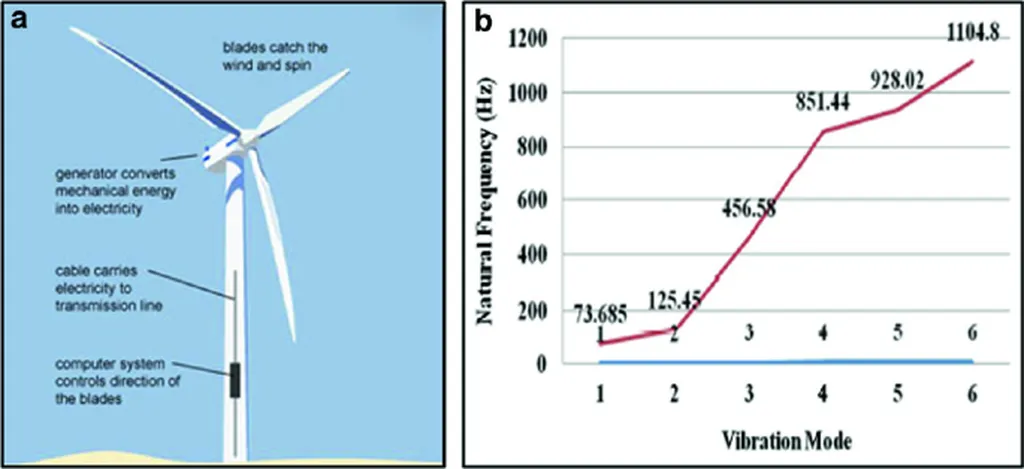In the pursuit of sustainable energy, wind power has emerged as a cornerstone, with turbines harnessing the wind’s might to generate clean electricity. Yet, the blades of these turbines face an invisible adversary: flow-induced vibrations (FIVs). These vibrations, including vortex-induced vibrations, flutter, and galloping, can significantly impact turbine performance and longevity. A recent review published in the journal *Energies*, titled “A State-of-the-Art Review of Wind Turbine Blades: Principles, Flow-Induced Vibrations, Failure, Maintenance, and Vibration Suppression Techniques,” delves into these challenges and explores innovative solutions to enhance turbine reliability and efficiency.
Led by Tahir Muhammad Naqash from the Center for Turbulence Control at the Harbin Institute of Technology Shenzhen, the review provides a comprehensive analysis of wind turbine blade technology. It covers fundamental principles, aerodynamic characteristics, material selection, and failure mechanisms, with a keen focus on the effects of FIVs on blade integrity and turbine performance.
“Flow-induced vibrations pose a substantial challenge to the wind energy sector,” Naqash explains. “They can lead to structural fatigue, reduced aerodynamic efficiency, and increased maintenance costs. Addressing these issues is crucial for improving turbine reliability and reducing the levelized cost of energy.”
The review highlights the need for effective vibration suppression techniques, discussing both active and passive control methods. Active methods involve using sensors and actuators to counteract vibrations in real-time, while passive methods focus on designing blades with inherent properties that dampen vibrations.
Moreover, the paper explores advancements in maintenance strategies, including sensor networks and drone-based inspections, which can help detect and address issues early. These technologies, coupled with AI-driven prognostic assessments, offer promising avenues for enhancing turbine performance and reducing operational costs.
“Emerging technologies, such as AI and novel materials for vibration damping, are game-changers,” Naqash notes. “They have the potential to revolutionize the way we maintain and operate wind turbines, particularly in harsh offshore environments.”
As the wind energy sector continues to grow, the challenges posed by FIVs become increasingly significant. This review underscores the importance of continued research in this area, emphasizing the need for innovative solutions to enhance turbine performance and reliability.
The insights provided by Naqash and his team could shape future developments in the field, driving the wind energy sector towards greater efficiency and sustainability. With the global push for renewable energy, these advancements are not just academic exercises but critical steps towards a cleaner, greener future.
The research was published in the open-access journal *Energies*, ensuring that these findings are accessible to researchers, engineers, and industry professionals worldwide, fostering collaboration and innovation in the wind energy sector.

